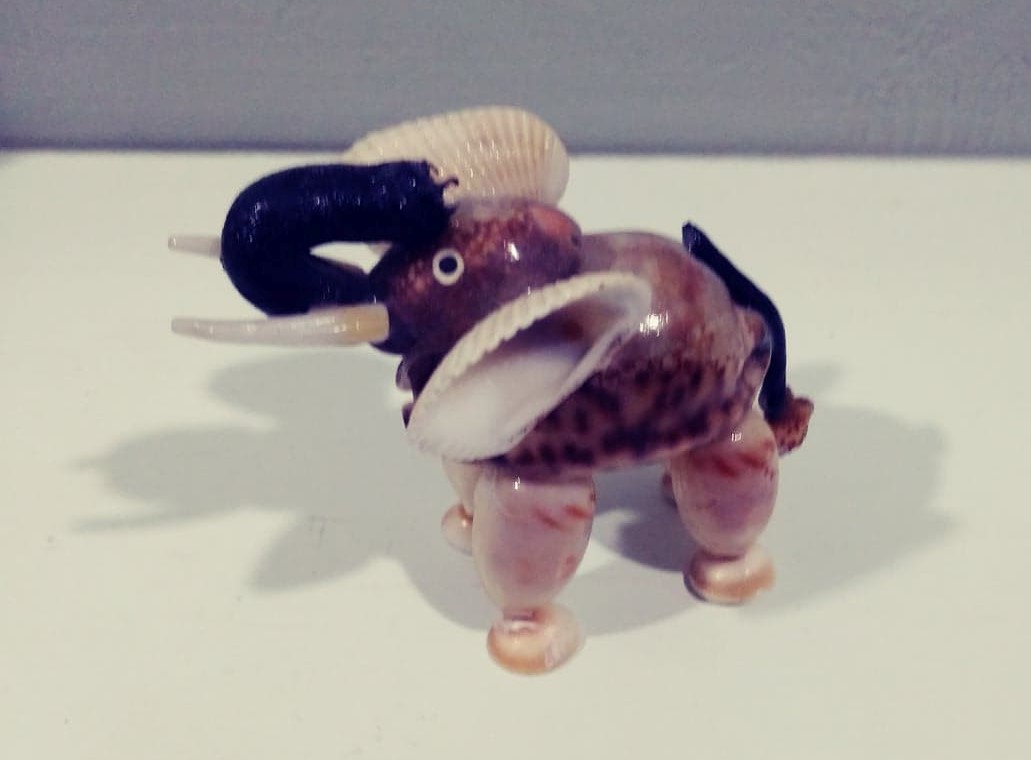Elephant Ears
Elephant Ears - Day 145 - Daily Content Challenge
Today’s Elephant was created using materials the artist found close by. He/she must have been near an ocean because seashells were used for the elephant's ears.
African elephants have much larger ears than Asian elephants. Shaped much like the continent of Africa, the large surface area of their ears helps to keep African elephants cool in the blazing African sun. Asian elephants tend to live in cool jungle areas, so their ears are smaller.
The big ears help the elephant to regulate their body temperature. Their ears allow excess body heat to escape and they can use their ears as fans to cool off their bodies. Their ears can cool their body by up to 5° C or 9° F. An elephant can also spray water on its ears to cool down the blood before it returns to the rest of the body.
Large ears also trap more sound waves. Elephants have the best hearing around. They can detect sounds at frequencies 20 times lower than humans. It isn’t just their ears that pick up sounds. Elephants have receptors in their trunks and feet that are able to pick up low-frequency vibrations.
How do elephants hear with their feet? Elephants communicate by emitting low-frequency sounds that travel many miles under the ground on the savannah. The sound waves come from the elephant’s huge vocal chords and other elephants up to 20 miles away can ‘hear’ the signals with their sensitive feet.
Do elephants have bones in their ears? Yes, they do. The skull of the African elephant has space for an outer ear canal of about 20 cm in length. This canal provides protection for its large tympanic membrane and large middle ear bones.
I learned a lot today. Did you? Having big ears is a good thing sometimes!
# living life abundantly # published author
Welcome!
Enjoy my posts.



